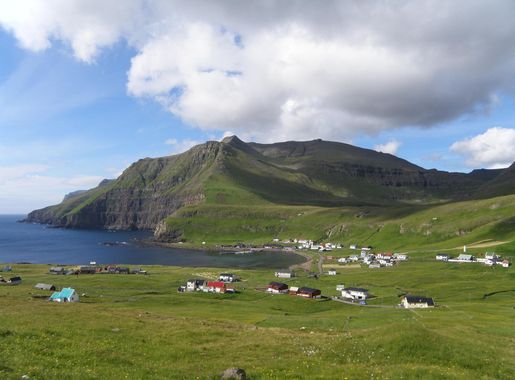
The Untamed Beauty of Suðuroy Island
Discover Suðuroy Island, the untouched paradise of the Faroe Islands, where rugged cliffs, serene villages, and breathtaking landscapes await every traveler.
Suðuroy Island, the southern gem of the Faroe Islands, is a haven for nature lovers and adventurers. Known for its rugged landscapes and dramatic cliffs, Suðuroy offers a unique experience away from the more frequented paths of the archipelago. The island is a blend of lush green hills, picturesque villages, and breathtaking seascapes, making it an ideal destination for those seeking tranquility and raw natural beauty. One of the highlights of Suðuroy is the stunning Beinisvørð cliff, which towers over 470 meters above sea level. This towering cliff offers panoramic views and is a perfect spot for hiking enthusiasts. Another must-visit location on the island is the charming village of Tvøroyri, where visitors can immerse themselves in local culture and history. The village is home to the historic Tvøroyri Church and several quaint cafes and shops. For a more serene experience, head to the peaceful village of Hvalba, known for its black sand beach and ancient coal mines. Here, you can explore the old mining tunnels and enjoy a quiet stroll along the shore. The island's unique geology is also showcased in the Ásmundarstakkur sea stack, a striking rock formation that rises dramatically from the ocean, offering a great photo opportunity. Whether you're an avid hiker, a culture enthusiast, or simply looking to unwind in a tranquil setting, Suðuroy Island has something to offer every traveler. Its unspoiled landscapes and welcoming communities provide an authentic Faroe Islands experience that will leave a lasting impression.
Local tips in Suðuroy Island
- Pack layers of clothing as the weather can change quickly, even in summer.
- Rent a car to explore the island at your own pace and reach remote areas.
- Visit the local tourist information center in Tvøroyri for maps and hiking routes.
- Try the local cuisine, especially fresh seafood, at one of the island's small restaurants.
- Respect the natural environment and stick to marked trails to preserve the island's beauty.
The Untamed Beauty of Suðuroy Island
Suðuroy Island, the southern gem of the Faroe Islands, is a haven for nature lovers and adventurers. Known for its rugged landscapes and dramatic cliffs, Suðuroy offers a unique experience away from the more frequented paths of the archipelago. The island is a blend of lush green hills, picturesque villages, and breathtaking seascapes, making it an ideal destination for those seeking tranquility and raw natural beauty. One of the highlights of Suðuroy is the stunning Beinisvørð cliff, which towers over 470 meters above sea level. This towering cliff offers panoramic views and is a perfect spot for hiking enthusiasts. Another must-visit location on the island is the charming village of Tvøroyri, where visitors can immerse themselves in local culture and history. The village is home to the historic Tvøroyri Church and several quaint cafes and shops. For a more serene experience, head to the peaceful village of Hvalba, known for its black sand beach and ancient coal mines. Here, you can explore the old mining tunnels and enjoy a quiet stroll along the shore. The island's unique geology is also showcased in the Ásmundarstakkur sea stack, a striking rock formation that rises dramatically from the ocean, offering a great photo opportunity. Whether you're an avid hiker, a culture enthusiast, or simply looking to unwind in a tranquil setting, Suðuroy Island has something to offer every traveler. Its unspoiled landscapes and welcoming communities provide an authentic Faroe Islands experience that will leave a lasting impression.
When is the best time to go to Suðuroy Island?
Iconic landmarks you can’t miss
Kirkjubømúrurin
Discover the historical treasures and breathtaking landscapes of Kirkjubøur, the cultural heart of the Faroe Islands.
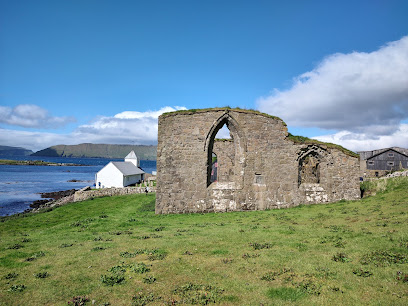
Múlafossur Waterfall
Discover the breathtaking Múlafossur Waterfall in the Faroe Islands, where cascading waters meet dramatic cliffs and stunning landscapes.
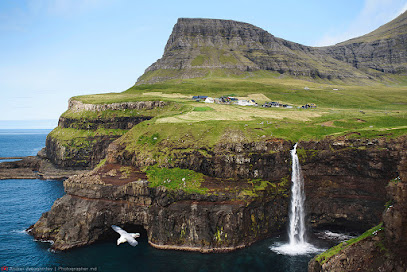
Gjógv Natural Harbour
Explore the stunning Gjógv Natural Harbour in the Faroe Islands, where dramatic cliffs meet serene waters, perfect for nature lovers and adventurers alike.
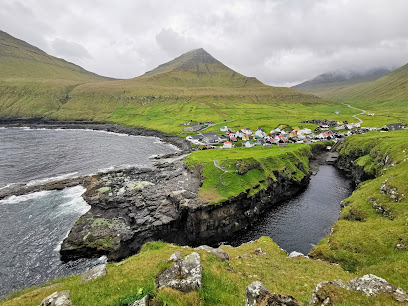
Fossá
Discover the breathtaking beauty of Fossá, the highest waterfall in the Faroe Islands, a must-visit for nature enthusiasts and adventure seekers.
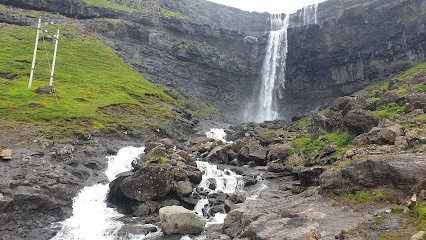
The Nordic House
Discover the heart of Nordic culture at The Nordic House in Tórshavn, where art, heritage, and community converge in a stunning setting.
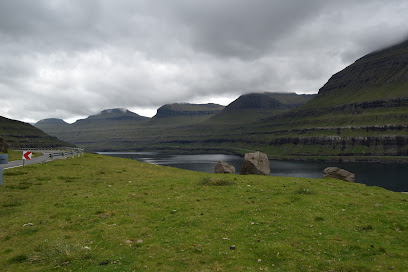
Skansin
Explore Skansin, Tórshavn's historic fortress, where rich maritime history meets breathtaking coastal views in the heart of the Faroe Islands.
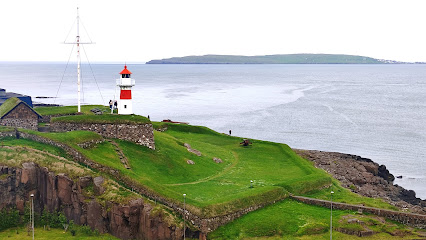
The Seal Woman (Kópakonan)
Explore the captivating folklore of The Seal Woman in Mikladalur, a stunning sculpture nestled in the breathtaking landscape of the Faroe Islands.
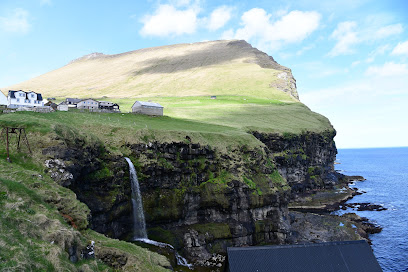
Trælanípa
Experience the breathtaking beauty of Trælanípa, a natural wonder in the Faroe Islands with stunning cliffs and a mesmerizing floating lake.
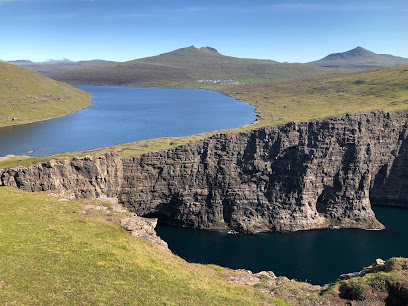
The National Gallery of The Faroe Islands
Discover The National Gallery of The Faroe Islands: A hub of art, culture, and creativity in Tórshavn showcasing local and international masterpieces.

Tjóðsavnið (Faroe Islands National Museum)
Explore the Faroe Islands' rich cultural and natural heritage at Tjóðsavnið, a must-visit museum showcasing history, art, and nature.
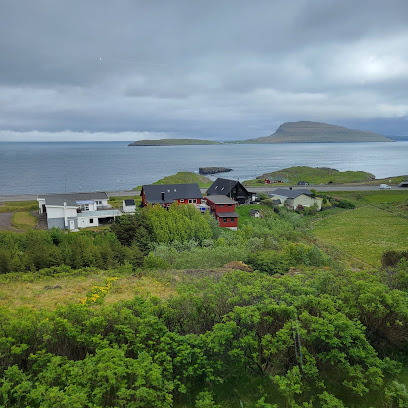
Kallur Lighthouse
Discover Kallur Lighthouse, a mesmerizing scenic spot on Kalsoy Island, offering breathtaking views and an unforgettable hiking experience in the Faroe Islands.
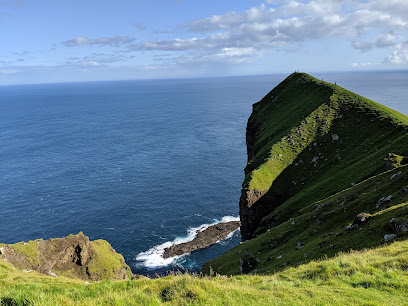
Slave Cliff (Lake Above the Ocean)
Discover the breathtaking views and rich folklore of Slave Cliff, a stunning hiking area in the heart of the Faroe Islands, perfect for nature enthusiasts.
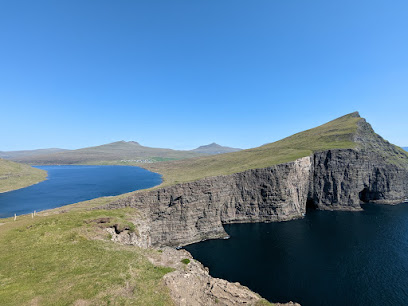
Giljanes Hostel & Campsite
Discover the untouched beauty of the Faroe Islands at Giljanes Hostel & Campsite, your gateway to adventure and nature in Sandavágur.

Klakkur
Explore Klakkur, a breathtaking peak in the Faroe Islands, offering stunning views and an unforgettable hiking experience for all adventurers.

Cafe MorMor
Experience the charm of Cafe MorMor, a delightful café in Tvøroyri, where local flavors meet stunning views in the heart of the Faroe Islands.
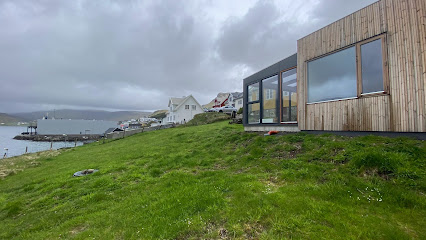
Unmissable attractions to see
Hvannhagi
Explore Hvannhagi in the Faroe Islands, where stunning natural beauty meets serene landscapes perfect for adventure and relaxation.
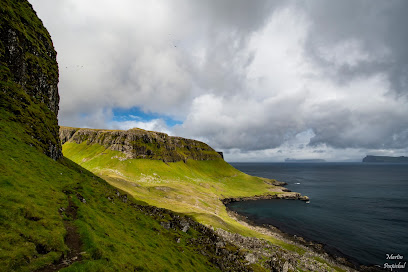
Rituskor
Explore the breathtaking Rituskor mountain peak in the Faroe Islands, offering stunning views and unforgettable hiking adventures.
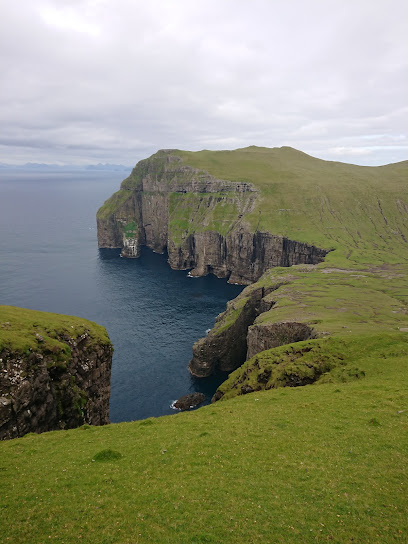
Ruth Smith Art Museum
Explore the vibrant artistic heritage of the Faroe Islands at Ruth Smith Art Museum, a cultural gem showcasing local and international art.
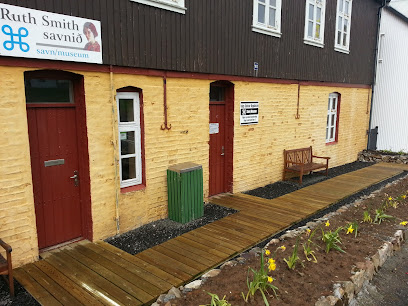
Krígssavnið
Discover the fascinating wartime history of the Faroe Islands at Krígssavnið Museum in Sørvágur, a captivating experience for every tourist.
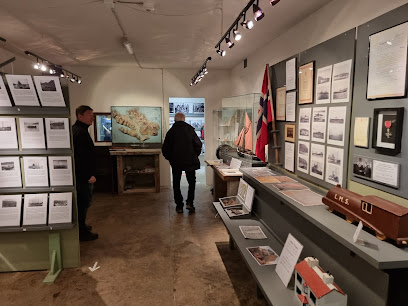
Horse Sculpture
Explore the captivating Horse Sculpture in Tórshavn, a symbol of the Faroe Islands' rich equestrian heritage amidst breathtaking landscapes.
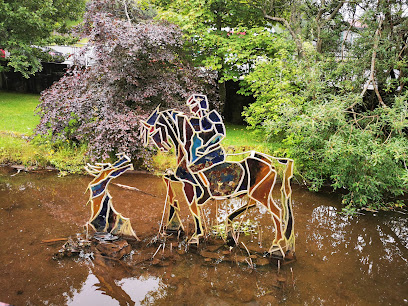
Viðarlundin við Tvøroyrar kirkju
Discover the tranquility of Viðarlundin in Tvøroyri, a stunning park offering breathtaking views and a peaceful escape into nature.
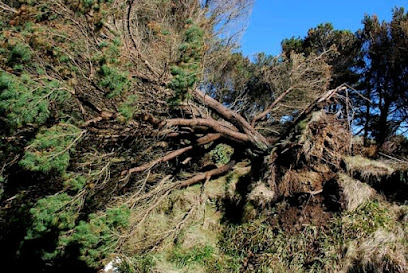
Essential places to dine
Katrina Christiansen
Discover authentic Scandinavian flavors at Katrina Christiansen in Tórshavn - a culinary gem in the heart of the Faroe Islands.
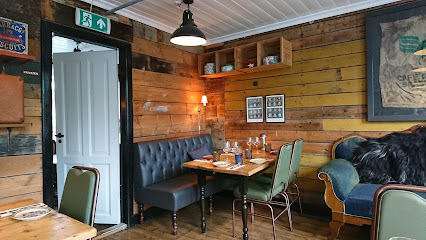
Angus Steakhouse
Experience top-notch dining at Angus Steakhouse in Tórshavn – where quality meets flavor in every steak.
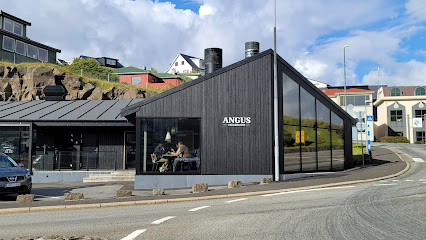
Áarstova
Experience authentic Faroese cuisine at Áarstova in Tórshavn - where local flavors meet breathtaking views.
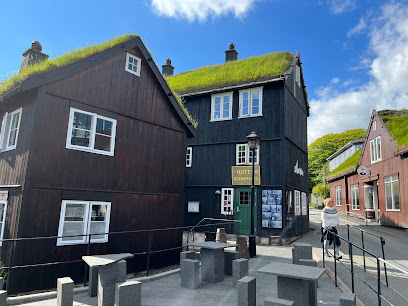
Barbara Fish House
Discover exquisite seafood dishes at Barbara Fish House in Tórshavn, where fresh local ingredients meet traditional Faroese flavors.
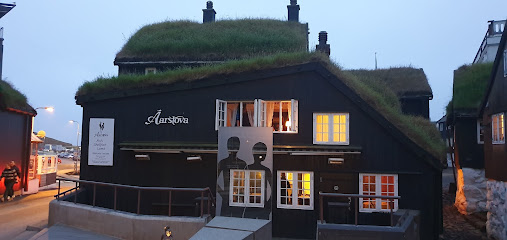
Kafe Umami
Discover Kafe Umami in Tórshavn: Where traditional Faroese flavors meet modern culinary creativity.
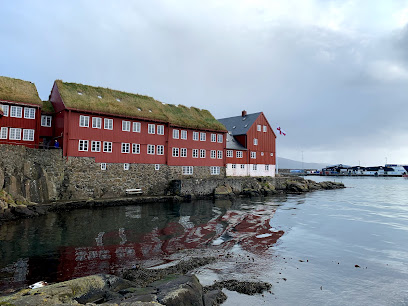
Suppugarðurin
Discover Suppugarðurin: A top ramen destination in Tórshavn offering authentic flavors amidst stunning Faroe Islands scenery.
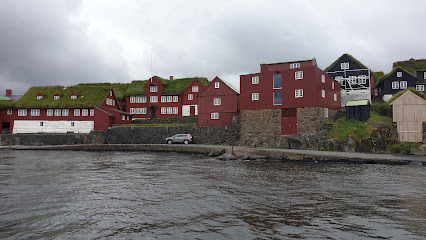
hvonn
Experience authentic Faroese cuisine at Hvonn in Tórshavn - where local ingredients meet culinary passion.
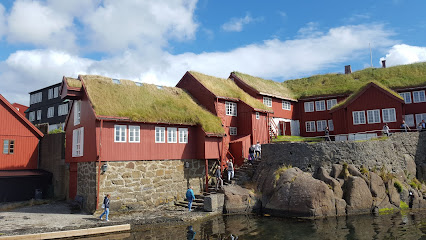
Smiðjan
Experience authentic Faroese cuisine at Smiðjan in Miðvágur – a culinary treasure amidst stunning landscapes.
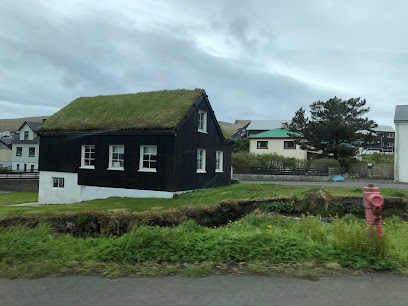
ROKS
Discover ROKS: A Culinary Gem in Tórshavn Offering Modern Takes on Traditional Faroese Cuisine.
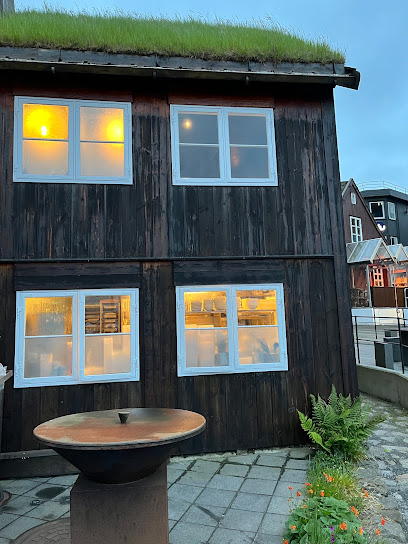
Skeiva pakkhús
Experience authentic Faroese cuisine in Tórshavn at Skeiva Pakkhús – where tradition meets modern culinary art.
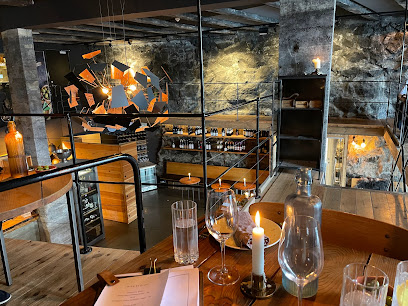
Caféin á Mølini
Discover authentic Faroese cuisine at Caféin á Mølini in Skálavík – where local flavors meet stunning island views.
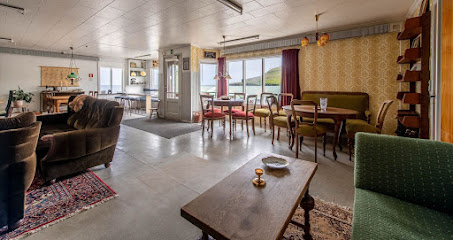
Pizza 67
Discover authentic Italian pizza at Pizza 67 in Tórshavn—where every slice tells a story amidst breathtaking landscapes.
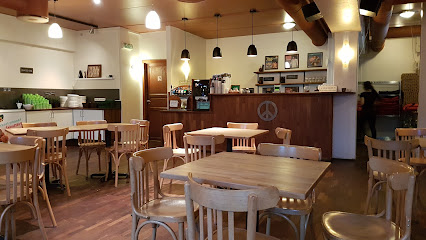
HAMSA
Discover the delightful fusion of local and international flavors at HAMSA, Hoyvík's premier dining destination in the Faroe Islands.

Thai Style Takeaway
Delight in authentic Thai flavors at Tórshavn's favorite takeaway spot - generous portions and affordable prices await you!
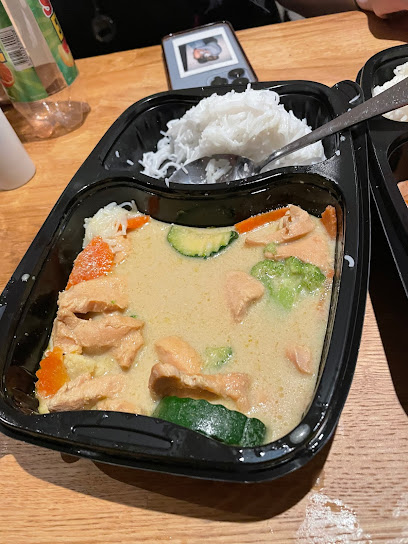
Smyrjibreyðsbúðin
Experience authentic Faroese cuisine at Smyrjibreyðsbúðin in Tórshavn – your go-to spot for delicious takeout meals.
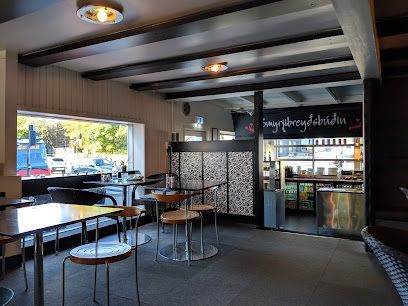
Markets, malls and hidden boutiques
Bónus
Discover the heart of local shopping at Bónus Supermarket in Tvøroyri, where quality meets affordability in the stunning Faroe Islands.
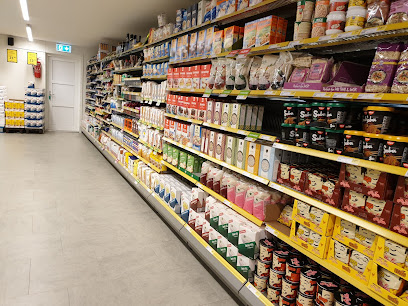
Bakkhús Supermarket
Discover the true flavors of the Faroe Islands at Bakkhús Supermarket in Hvalba, your local source for fresh produce and traditional delicacies.
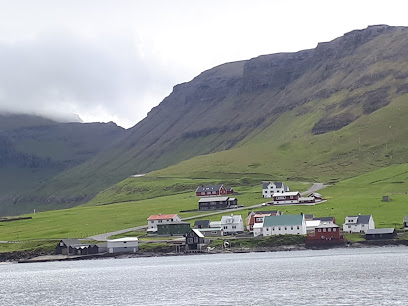
Zacharias Muller Supermarket
Discover local flavors and essentials at Zacharias Muller Supermarket, Porkeri's charming grocery destination for fresh produce and Faroese specialties.
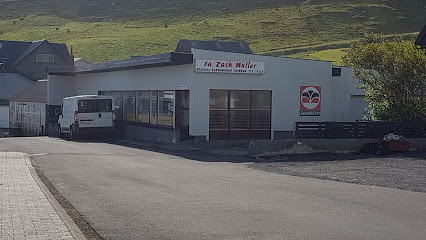
Magn Gas Station
Discover the convenience of Magn Gas Station in Trongisvágur, offering snacks, drinks, and essential goods while you explore the scenic Faroe Islands.
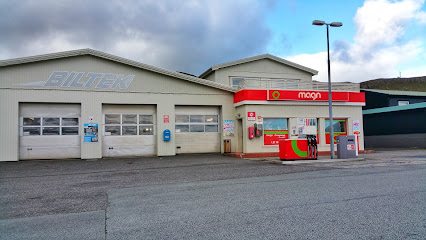
Torgið Shopping Center
Explore Torgið Shopping Center in Vágur for a unique shopping experience filled with local culture, diverse shops, and delightful cafes.
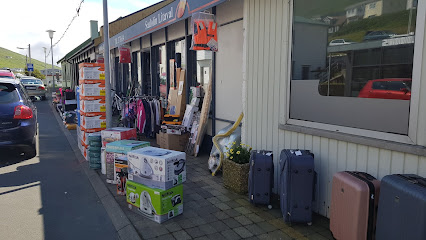
Rúsdrekkasøla Landsins - Trongisvágur
Discover the finest selection of local beers, wines, and spirits at Rúsdrekkasøla Landsins in Trongisvágur, the heart of the Faroe Islands.
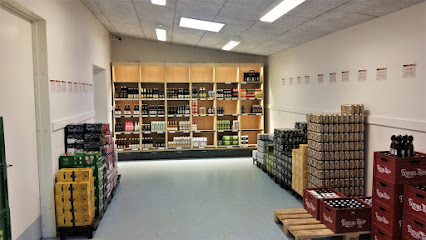
Mammulig
Explore Mammulig in Vágur, Faroe Islands - your go-to baby store for quality products and a charming shopping experience for families.
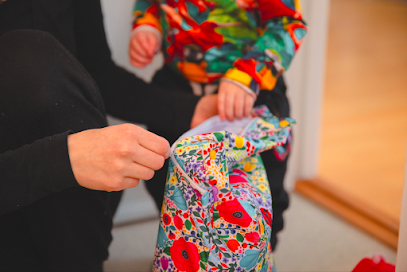
Á Shop
Explore Vágur's Á Shop: Your go-to supermarket for fresh local produce and unique Faroese flavors in the heart of the Faroe Islands.
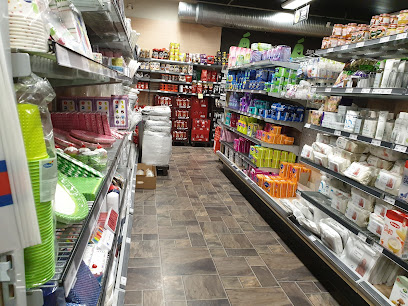
Sumbiar Handil
Discover the charm of local craftsmanship at Sumbiar Handil in Sumba, Faroe Islands - a must-visit store for unique souvenirs.
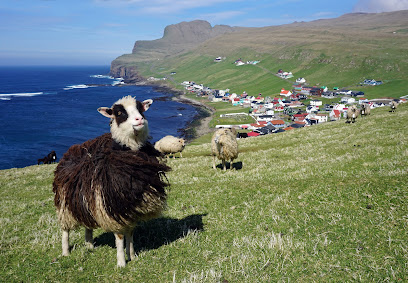
Tangabúðin
Explore Tangabúðin, a cozy book store in Tvøroyri, where literature and local culture come together in the heart of the Faroe Islands.
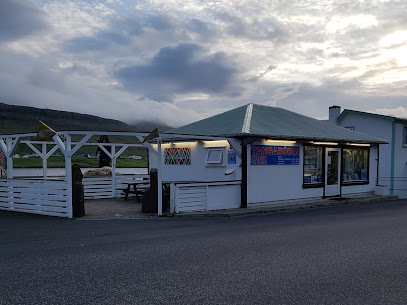
Suðuroyar Heimavirki
Discover unique Faroese crafts and souvenirs at Suðuroyar Heimavirki, a charming gift shop in Vágur, Faroe Islands.
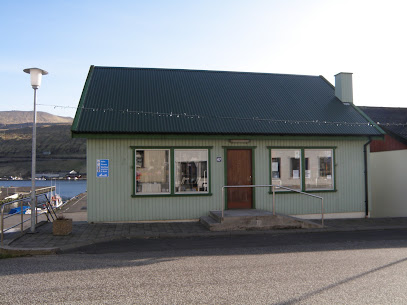
Toystovan
Discover Toystovan in Vágur, where local fashion meets the spirit of the Faroe Islands—perfect for travelers seeking unique clothing.
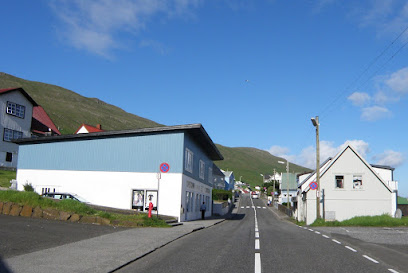
ESLA
Explore the vibrant flavors of the Faroe Islands at ESLA Grocery Store in Tvøroyri, your go-to destination for local and international delicacies.
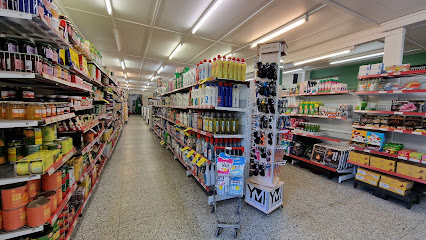
SPORT 24
Explore the outdoors with top-quality sports gear at SPORT 24 in Tvøroyri, your essential stop for adventure in the Faroe Islands.

Sirri
Discover unique Faroese fashion at Sirri, a charming clothing store in Vágur, where local culture meets contemporary style.

Essential bars & hidden hideouts
Irish Pub Torshavn
Discover the heart of Tórshavn at Irish Pub Torshavn, where traditional Irish charm meets local Faroese hospitality.
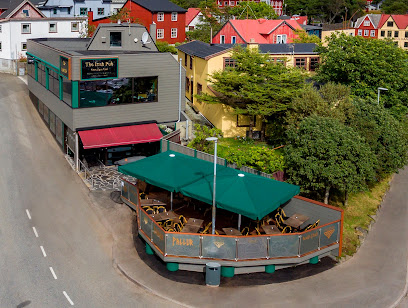
Sirkus Bar
Experience the vibrant nightlife of Tórshavn at Sirkus Bar, where creative cocktails and lively music create unforgettable memories.
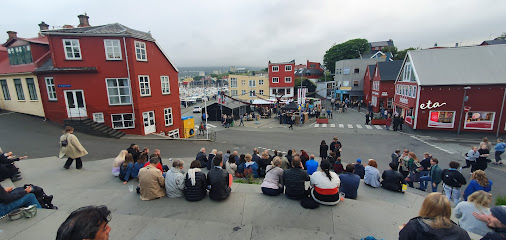
Mikkeller Tórshavn
Experience the vibrant craft beer scene at Mikkeller Tórshavn, a quirky bar in the heart of the Faroe Islands offering unique brews and light bites.
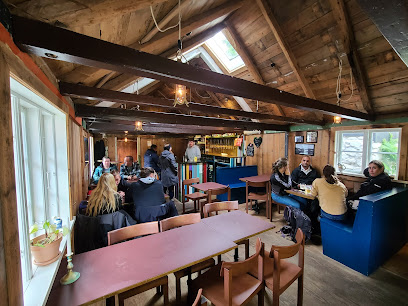
OY Brewing
Experience the essence of the Faroe Islands at OY Brewing, a premier brewpub offering local craft beers and delicious bar food in Tórshavn.
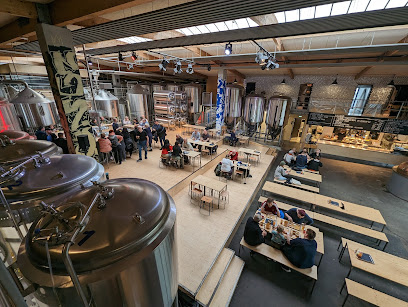
Cafe MorMor
Discover the flavors of the Faroe Islands at Cafe MorMor, where local ingredients meet cozy ambiance for an unforgettable culinary experience.
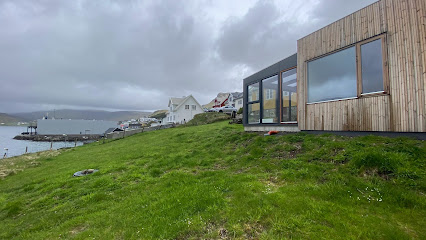
Glasstovan
Discover the essence of Faroese culture at Glasstovan, a charming café in Tvøroyri, offering delightful treats and stunning views.
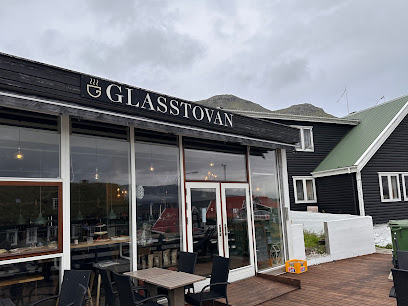
Glitnir
Experience the vibrant atmosphere of Glitnir, a premier bar in Tórshavn, offering an exquisite selection of local and international drinks.
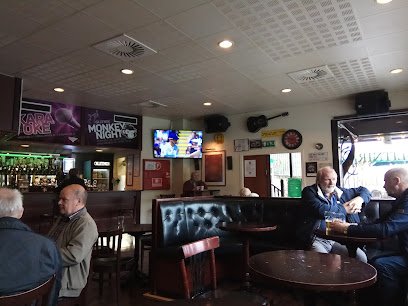
Báran
Discover the flavors of the Faroe Islands at Báran, a delightful restaurant in Vágur known for its fresh, locally sourced dishes.
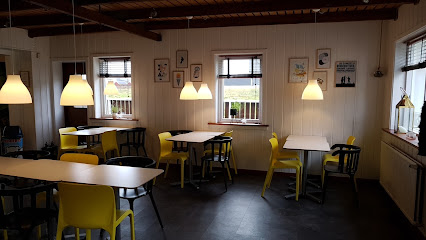
Matstovan i Porkeri
Discover the authentic flavors of the Faroe Islands at Matstovan i Porkeri, where local cuisine meets a warm and inviting atmosphere.
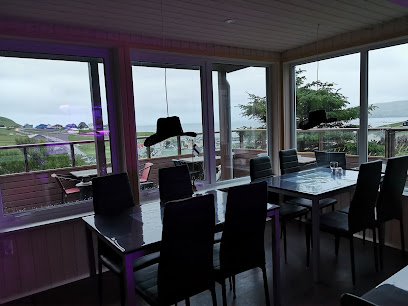
Matstovan Garðslon
Experience the heart of Faroese cuisine at Matstovan Garðslon, where local flavors meet delightful culinary artistry in a cozy atmosphere.

Pubbin
Discover Pubbin in Tvøroyri for an authentic Faroese bar experience with stunning views and local charm.
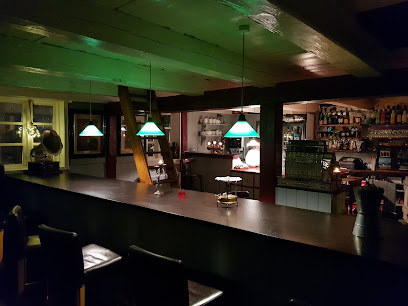
Blábar
Discover the vibrant nightlife of Tórshavn at Blábar, a cozy bar with live jazz and blues music, perfect for a night out in the Faroe Islands.
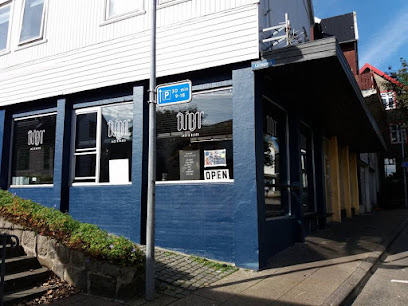
Tórshøll
Discover Tórshøll in Tórshavn - the ultimate bar experience with local brews, cozy atmosphere, and Faroese hospitality in the heart of the Faroe Islands.
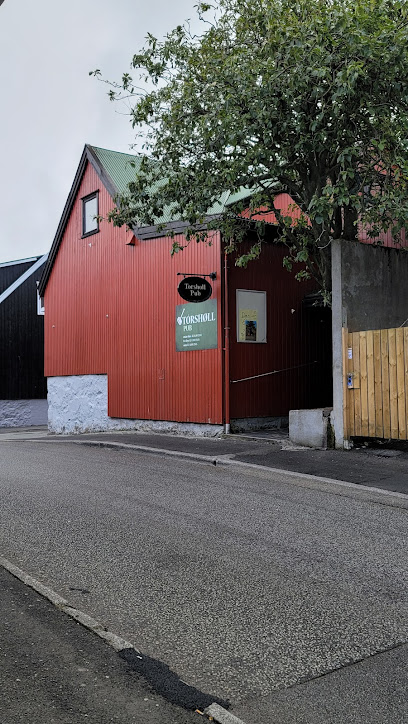
Salt - Sound Art & Live Theatre
Immerse yourself in sound and performance art at Salt - Sound Art & Live Theatre, a cultural gem in the breathtaking Faroe Islands.
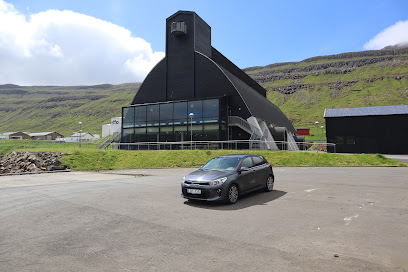
Oyggin Art Gallery
Experience the charm of Oyggin Art Gallery, an art café in the Faroe Islands where culinary delights meet local creativity in a stunning atmosphere.
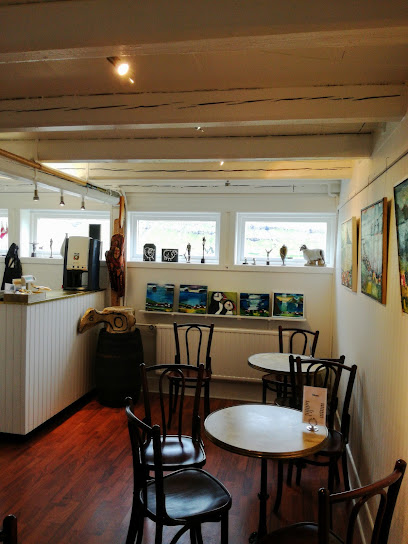
Local Phrases about Suðuroy Island
-
- HelloHalló
[haɫɔ] - GoodbyeFarvæl
[fɑrvɛl] - YesJa
[ja] - NoNei
[nɛi] - Please/You're welcomeVær så god
[vɛr sɔ gɔð] - Thank youTakk fyri
[taʰk fyrɪ] - Excuse me/SorryFyrirgev mær
[fyriɹjɛv mɛaɹ] - How are you?Hvussu hevur tú tað?
[kvusːu hɛvʊɹ tuː taː] - Fine. And you?Godt. Og tú?
[goʊt ɔk tuː] - Do you speak English?Talar tú enskt?
[talaɹ tuː ɛnskt] - I don't understandEg skilji ikki
[ɛa skɪlji ɪhtkɪ]
- HelloHalló
-
- I'd like to see the menu, pleaseEg vil síggja matsedilin, vænta
[ɛa vil siːja matsɛdilɪn vɛnta] - I don't eat meatEg eta ikki kjøt
[ɛa ɛtɑ ɪhtkɪ çøt] - Cheers!Skál!
[skɔɫ] - I would like to pay, pleaseEg vil gjalda, vænta
[ɛa vil ɹjaldɑ vɛnta]
- I'd like to see the menu, pleaseEg vil síggja matsedilin, vænta
-
- Help!Hjálp!
[çlaʊp] - Go away!Far til fjøru!
[fɑɹ tɪl fjøːɹʊ] - Call the Police!Ringi til løgregluna!
[ɹɪŋɪ tɪl løɣɹɛɣlʊna] - Call a doctor!Ringi til læknin!
[ɹɪŋɪ tɪl læknɪn] - I'm lostEg er týstur
[ɛa ɛaʰ toɪstʊɹ] - I'm illEg er veikur
[ɛa ɛaʰ vɛɪkʊɹ]
- Help!Hjálp!
-
- I'd like to buy...Eg vil keypa...
[ɛa vil tʃeɪpa] - I'm just lookingEg bara sigi
[ɛa bara sɪɣɪ] - How much is it?Hvussu nógv kostar tað?
[kvusːu nɔɪv kostar taː] - That's too expensiveTað er ov dýrt
[taː ɛa ɔv diːɹt] - Can you lower the price?Kanstu sætta prísin?
[kansˌtu sɛaʰtɑ pɹiːsɪn]
- I'd like to buy...Eg vil keypa...
-
- What time is it?Hvussu tíð er tað?
[kvusːu tiːð ɛaʰ taː] - It's one o'clockTað er eitt
[taː ɛaʰ aɪt] - Half past (10)Hálvgilt (10)
[haʊlvgɪlt (10)] - MorningMorgun
[moɹɣʊn] - AfternoonEftirmiðdagur
[ɛaʰtɪɹmiðaɣʊɹ] - EveningKvøld
[kvøɫ] - YesterdayÍ gjár
[iː çaʊaɹ] - TodayÍ dag
[iː dav] - TomorrowÁ morgun
[aʊ moɹɣʊn] - 1Eitt
[aɪt] - 2Tvær
[tvaɪɹ] - 3Tríggjar
[tɹiːɣaɹ] - 4Fýra
[fʊɪɹa] - 5Fimm
[fɪm] - 6Seks
[sɛks] - 7Sjey
[ʃɛɪ] - 8Átta
[aʊtʰa] - 9Niður
[niːðʊɹ] - 10Tíggju
[tʰɪɣʊ]
- What time is it?Hvussu tíð er tað?
-
- Where's a/the...?Har er ein/het...
[haɹ ɛaʰ aɪn/hɛt] - What's the address?Hvussu er adressan?
[kvusːu ɛaʰ aðɹɛsːan] - Can you show me (on the map)?Kannstu vísa meg (á korti)?
[khansˌtu vɪːsa mɛaɣ (aʊ kɔɹtɪ)] - When's the next (bus)?Nær er næsta (bussin)?
[neɛaʰ ɛaʰ næsta (bʊsːɪn)] - A ticket (to ....)Ein miði (til ....)
[aɪn miðɪ (tɪl ....)]
- Where's a/the...?Har er ein/het...
History of Suðuroy Island
-
Suðuroy Island, like much of the Faroe Islands, was first settled by Norse Vikings in the 9th century. Archaeological evidence points to the establishment of farms and small communities that harnessed the island's natural resources. The rugged landscape and fertile soil enabled early settlers to thrive, and Suðuroy became an important part of the Viking Age in the North Atlantic.
-
During the medieval period, the Faroe Islands, including Suðuroy, were part of a larger trade network dominated by the Hanseatic League. The island's strategic location in the North Atlantic made it a key stopover point for ships. Goods such as dried fish, wool, and bird feathers were traded with mainland Europe, bolstering the island's economy and cultural exchange.
-
In the 16th century, the Faroe Islands, including Suðuroy, underwent significant changes with the onset of the Reformation and the consolidation of Danish rule. The Lutheran Reformation led to the establishment of new religious practices and institutions, and Suðuroy saw the construction of churches and schools under Danish influence. This period also marked the beginning of a more centralized administration under the Danish crown.
-
The 17th and 18th centuries were fraught with danger as Suðuroy, like other parts of the Faroe Islands, faced frequent pirate raids. To protect against these threats, the islanders built fortifications and lookout points along the coast. The remnants of these defenses can still be seen today, offering a glimpse into the islanders' efforts to safeguard their homes and livelihoods.
-
The 19th and early 20th centuries saw a significant boom in the fishing industry on Suðuroy. The island's proximity to rich fishing grounds in the North Atlantic made it a hub for commercial fishing. Innovations in fishing techniques and the establishment of processing facilities led to economic growth and the development of fishing villages. The industry remains a cornerstone of Suðuroy's economy and cultural identity.
-
During World War II, Suðuroy, along with the rest of the Faroe Islands, was occupied by British forces to prevent a German invasion. The occupation brought significant changes, including the construction of military installations and infrastructure improvements. The presence of British troops also led to cultural exchanges and lasting relationships between the islanders and their British counterparts.
-
In recent decades, Suðuroy has undergone modern development while maintaining its rich cultural heritage. Efforts to preserve traditional Faroese practices, such as boat building, knitting, and folk music, have been complemented by investments in infrastructure and tourism. The island's unique blend of history and contemporary life makes it a fascinating destination for travelers.
Suðuroy Island Essentials
-
Suðuroy Island is one of the southernmost islands in the Faroe Islands. The most common way to get there is by taking the Smyril Line ferry from Tórshavn, the capital of the Faroe Islands, to the island's main port, Tvøroyri. The ferry operates multiple times a day, and the journey takes about two hours. Alternatively, there are helicopter services available from Tórshavn to Froðba, but these are less frequent and can be more expensive.
-
Once on Suðuroy Island, you can get around by car, bus, or bike. Renting a car is the most convenient way to explore the island at your own pace. There are also public buses that connect the main towns and villages, and schedules can be found at local bus stops or online. Cycling is another popular option, especially during the summer months, but be prepared for hilly terrain and changing weather conditions.
-
The official currency of the Faroe Islands is the Faroese króna (DKK), which is pegged to the Danish krone. Credit and debit cards are widely accepted, but it's advisable to carry some cash for smaller establishments and remote areas where card payment might not be possible. ATMs are available in the larger towns such as Tvøroyri and Vágur.
-
Suðuroy Island is generally very safe for tourists. Crime rates are extremely low, and there are no specific areas or neighborhoods known for targeting tourists. However, as with any travel destination, it's always wise to be cautious and keep an eye on your personal belongings. The island's rugged terrain can pose risks, so be careful when hiking or exploring remote areas.
-
In case of emergency, dial 112 for immediate assistance. Medical facilities are available in Tvøroyri, including a hospital that can handle most medical issues. It's a good idea to have travel insurance that covers medical emergencies. For minor health issues, there are pharmacies in Tvøroyri and Vágur where you can purchase over-the-counter medications.
-
Fashion: Do dress in layers to accommodate the changing weather. Don't wear overly flashy or revealing clothing. Religion: Do respect local customs and traditions, especially if visiting churches. Public Transport: Do be punctual, as public transport runs on a strict schedule. Don't eat or drink on public buses. Greetings: Do greet people with a friendly 'Hallo' or 'Góðan dag'. Don't be overly familiar with strangers. Eating & Drinking: Do try local delicacies like skerpikjøt (dried mutton). Don't refuse food or drink offerings, as it is considered impolite.
-
To experience Suðuroy Island like a local, visit the local markets and cafes, where you can interact with residents and learn more about their way of life. Participate in community events and festivals if your visit coincides with one. Don’t miss the scenic hiking trails such as Hvannhagi and Beinisvørð, which offer breathtaking views of the island's rugged landscape.
Trending Landmarks in Suðuroy Island
-
Kirkjubømúrurin
-
Múlafossur Waterfall
-
Gjógv Natural Harbour
-
Fossá
-
The Nordic House
-
Skansin
-
The Seal Woman (Kópakonan)
-
Trælanípa
-
The National Gallery of The Faroe Islands
-
Tjóðsavnið (Faroe Islands National Museum)
-
Kallur Lighthouse
-
Slave Cliff (Lake Above the Ocean)
-
Giljanes Hostel & Campsite
-
Klakkur
-
Cafe MorMor
Nearby Cities to Suðuroy Island
-
Things To Do in Vágur
-
Things To Do in Nólsoy
-
Things To Do in Argir
-
Things To Do in Tórshavn
-
Things To Do in Miðvágur
-
Things To Do in Sandavágur
-
Things To Do in Runavík
-
Things To Do in Strendur
-
Things To Do in Sorvagur
-
Things To Do in Kvívík
-
Things To Do in Vestmanna
-
Things To Do in Hvalvík
-
Things To Do in Gøta
-
Things To Do in Klaksvik
-
Things To Do in Inverness









